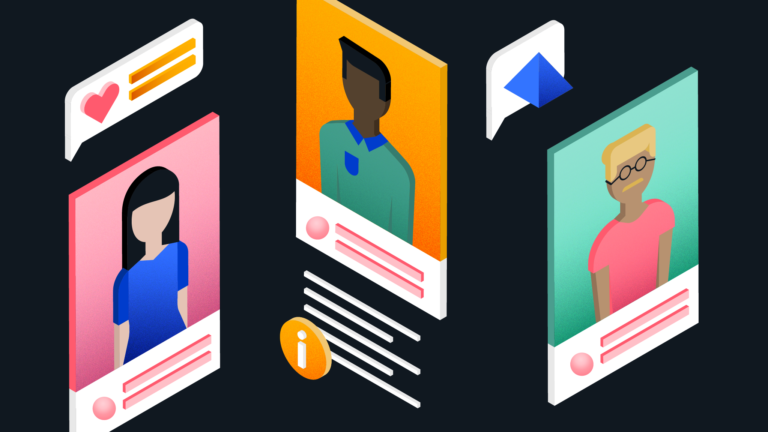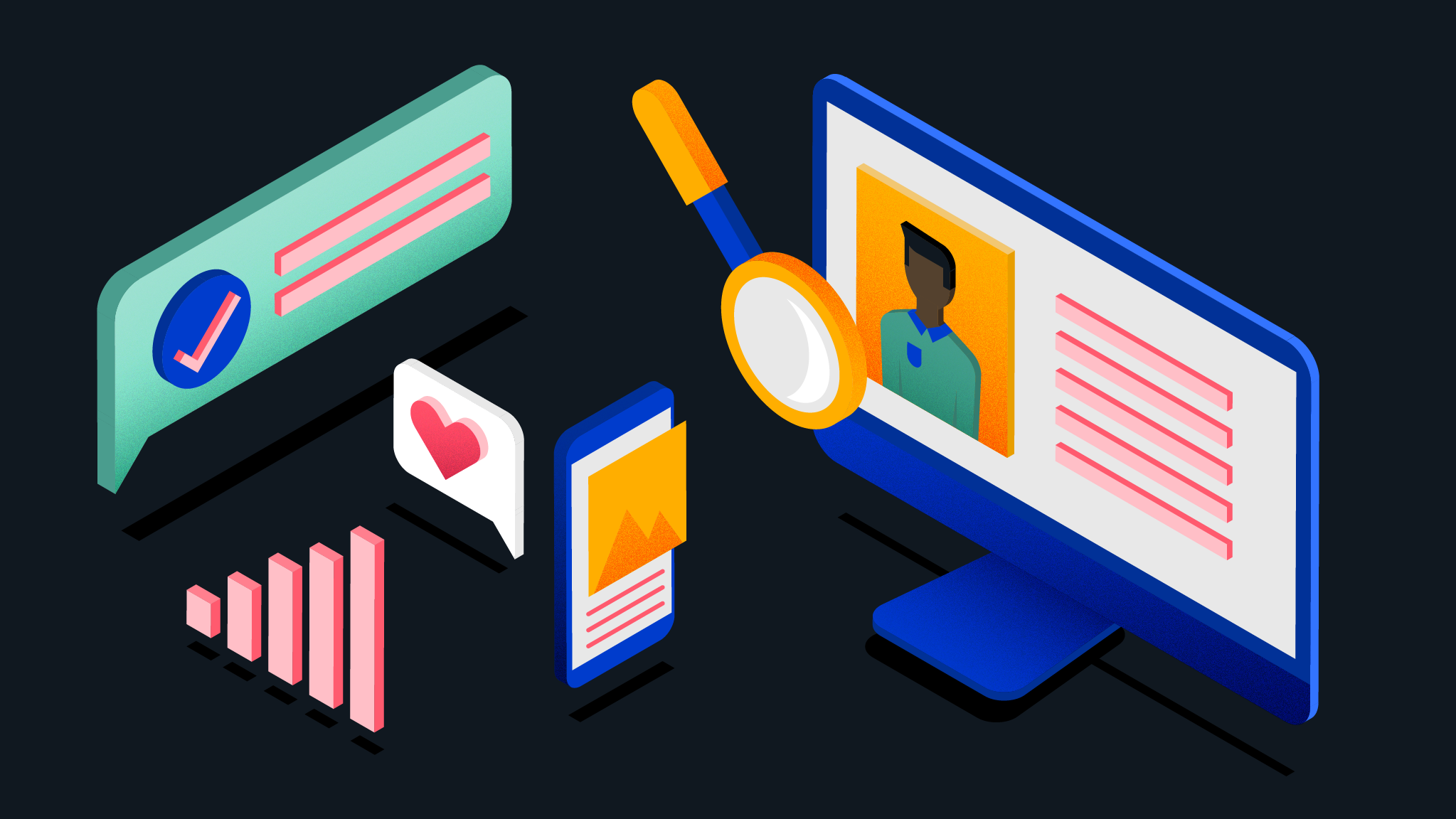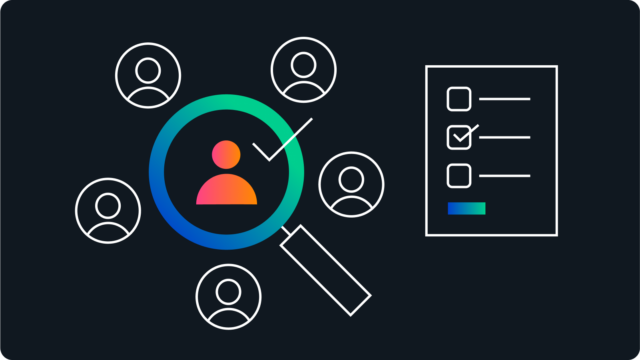How to create audience personas – a beginner’s guide

Have you ever opened a gift from someone and thought, “How did they know that I needed this?”. It’s a good feeling. It’s hard not to feel valued and prioritized when someone has done their research to figure out what it is you want and need.
B2B marketing isn’t much different. People want to buy things that meet their wants and needs. If your business clearly communicates that you have what your specific audience needs, there’s a good chance you’ll make a sale. But all too often businesses try to market to everyone, wrongly assuming that “everyone needs what we have”. It’s just not true. And it dilutes the power of marketing your offering to the right businesses – the ones who want, need, and can’t live without what you have.
Instead of marketing your offering to everyone, focus on delivering your solution to the businesses who need it the most. Audience personas are a helpful tool for this.
In this article we’ll unpack the process of creating audience personas – the what, why, how, how many, and how in the world you make one.
What is an audience persona?
An audience persona (also referred to as a buyer persona or customer persona) is a semi-fictional character that embodies your target audience. It’s a concise snapshot of all of the relevant information you can obtain about them, all packaged together to form a “person” you can focus your marketing efforts towards. Note that most businesses will need multiple personas. Keep reading for more on that.
Why persona development is important
Persona development helps you define your target audience – where they live, what they do, the problems they have, and the solutions they need.
Personas help your entire team stay aligned on who you seek to serve. They’re used to inform sales, marketing, and product development strategies. And at the end of the day, audience personas save you time and money. Because instead of taking a shot in the dark, hoping your message is received by the right people, you market with confidence and send the right message to the right people, at the right time.
How many personas do you need?
While there’s no concrete right or wrong number, the answer is rarely one. And it would be bad if you had 10. Most businesses will have two to three distinct audiences that they want to prioritize. Any more and you risk diluting your marketing by trying to reach too many people.
At Tiller, many of our customers are tempted to try to target five or more personas. We always encourage these businesses to prioritize the most important audiences – those that are the best fit for your offering and have the most impact over whether you make a sale.
What should be included in an audience persona?
Consider the gift analogy again. If you want to hit it out of the park with a birthday gift, what would you need to know? Probably who the person is, their likes, dislikes, wants, needs, and dreams. You can follow a similar pattern to create your audience personas.
To help you get started, we’ve put together a free downloadable template that you can use in combination with this step-by-step guide.
Your step-by-step guide to building an audience persona

1. Identify your target audience
Take a look at your existing customer base. Who seems to need your offering the most? Who does your sales team interact with the most? Is it the VP of Operations? Chief Information Officer? Watch for trends, not just who you make the sale to, but who gets the most value out of your product or service. Once you’ve got an idea of that ideal customer, it’s time to dig into some research.
2. Research demographics
Now that you’ve identified who you feel your ideal customers are, it’s time to identify some practical information. How old are they? Where do they live? What industry do they work in? These details are sometimes the easiest to identify given today’s age of contact database software like ZoomInfo. Try to identify the following:
- Age range
- Gender
- Stage of life
- Geographic location
- Cultural influences
- Industry
Search for patterns. You can gain insight into many of these categories during your sales process, especially if you make it a habit to note your learnings in your CRM. Another targeted strategy could be to do a deep dive on a handful of your ideal customers on LinkedIn.
Remember, the more you research your actual customer base, the less your team will have to lean on guesswork or stereotypes.
3. Assess psychographics
Psychographics encompass the emotional and human side of your customer. Observe and document this information throughout your sales process. And as you compile this information, watch for similarities and trends. When you find them, write them out as examples, as we’ve shown below. Be as specific as possible, because you can use these examples to inform your personas.
Fears
Fears are the things that keep your audience up at night. It could be anything from finances (e.g. overspending on software) to performance (e.g. failing to deliver tangible business results to leadership) or anything in between.
Example
- Melissa is afraid to change software providers 🚫
- Melissa is afraid to change software providers because she changed providers two years ago and is still running into problems that should have been solved in the implementation ✅
Pain points
Pain points are things that cause friction in the business. Perhaps inefficient processes or out-of-date technology. Your offering needs to solve these pain points for your customer or there’s no reason for them to buy it.
Example
- George is frustrated with his CRM 🚫
- George is frustrated with his CRM because it doesn’t integrate smoothly with his website forms ✅
Goals
These are the things your audience wants to achieve – increased revenue, better speed to lead, award-winning customer service, etc. As you consider the goals, you should also identify what barriers might hold your customers back from achieving them. Those barriers, like the pain points, must be resolved with your solution.
Example
- Paulo needs to improve customer satisfaction scores 🚫
- Paulo needs to improve customer satisfaction because he promised the CEO ratings would improve by 10% this year ✅
Needs
Needs are those specific things that enable the customer to achieve their goals. There is often some level of urgency attached to these needs. Your offering should clearly deliver the solution, that “thing” that will help them reach their target.
Example
- Chandra needs to improve product quality assurance 🚫
- Chandra needs to improve product quality assurance in order to increase her customer base and appeal to an enterprise audience ✅
4. Understand roles
Now to narrow down the most common roles in your target audience. Understanding how your target fits into the big picture of the business they’re in is key to effective marketing and sales. Effective audience personas should include job title (VPO, CMO, CIO, Engineer, etc.) and role in decision making. Here’s an example to highlight the value of this info.
Let’s say you are part of a startup software company and your primary target audience is the VP of Operations – the decision maker, the one signing the cheques. Now, you’re selling software, so it’s easy to assume you should include plenty of technical jargon to prove your expertise (we hear this often from our clients at Tiller).
But the VP may not need or want to understand the inner workings of your software in order to make the decision. They might be more concerned with the value per dollar and the impact your software is going to make on their company as a whole. And if the business value is buried beneath a mound of technical jargon, winning the sale will be an uphill battle.
On the flip-side, if your target audience is the software engineer who is responsible for vetting potential software solutions for the VP, technical jargon might just be what helps you get your foot in the door.
In this example, the VP and engineer work in the same business, but have different needs. Understanding the nuances of their roles (information that should be included in your audience personas) allows you to optimize and personalize your marketing and sales strategies.
5. Identify behavioural trends
You can learn a lot about someone from where they hang out and how they spend their time. As you learn more about your target audience, try to observe patterns in behaviours.
- What social media channels do they engage with?
- Who do they follow on LinkedIn?
- What kind of content are they most interested in?
While it might feel a bit like stalking (don’t worry, it’s not), including behavioural patterns in your personas can provide valuable insights to your marketing and sales teams.
6. Bring your persona to life
The best audience personas feel human. They represent real people, not just stereotypes and blind assumptions. After you’ve gathered the relevant details of your persona, give them a name! While you’re at it, give them a face too. Select a stock photo that accurately represents the information you’ve gathered from your research, and you’ll be looking at the essence of your audience.
Free audience persona template
We’ve only begun to scratch the surface on audience personas, but we’ve created a free template to get you started. Simply use the steps above like a checklist to fill in the template as you go. Add in a stock photo that fits the description of each of your personas and you’re off to the races!
Plus, here’s a basic audience persona example you can reference as you build your own personas.
Name: Patrick
Age: 38
Location: Houston, Texas
Title: VP of Operations
Industry: Manufacturing
Role in decision making: Decision maker
Pain Points: Inefficient internal communications across departments; suboptimal production time; department heads complain about the existing team communication software
Fears: Missing quarterly production targets because of internal miscommunications or lack of information across departments; spending too much on a software nobody will want to use
Needs: Easy-to-use, cost-effective team communication software that all departments can get on board with
Goals: Streamline internal communications, drive production efficiencies, and ultimately increase revenue; leverage new technology to gain a competitive advantage
Social media engagement: Primarily LinkedIn, occasionally Twitter
Preferred Content Type: Video (e.g. TEDTalks, YouTube); news articles from reputable sources (Harvard Business Review, Business Insider)
Other: Ambitious, competitive, and willing to take risks to get results
Conclusion
Remember that as your business evolves, so will your customers. To keep your marketing effective, we recommend reviewing and updating your audience personas annually (or sooner if your brand positioning changes).
If you’re looking for a strategic partner to help guide you through brand development (including brand positioning, building audience personas, and more), give us a call. We’re passionate about helping tech and SaaS companies build winning marketing strategies for long-term results.



